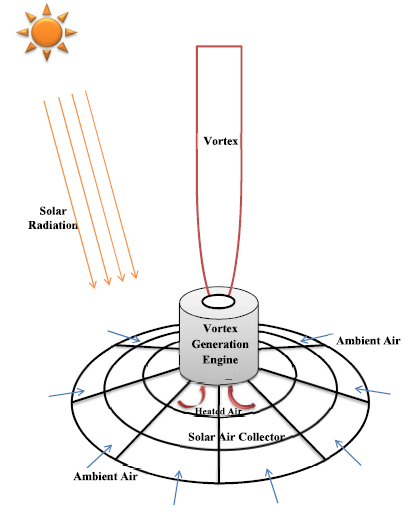DEVELOPMENT OF AVE APPLICATIONS IS PARAMOUNT
The development of Atmospheric Vortex Engine (AVE) applications for the next coming decade is paramount. A customized AVE can be used as first aid to combat local water shortages. The AVE will save lives and accelerate as well favourable social and economical outcomes of climate change adaptation and mitigation.
SHORTAGE OF FRESH WATER
The global shortage of the fresh water in the nearby future is eminent and has become already a social and human disaster. Periodical droughts in the main foods producing regions are causing severe economic and environmental impacts
The problem of drinking water and access to its consumption is recognized as one of the most important objectives of the Millennium Development Goals, the UN Millennium Declaration in 2000.
Nearly a decade ago, UN Secretary-General Ban Ki-moon stated in his report during the World Water Day, March, 22, 2010, that every 20 seconds a child dies of diseases related to the shortage a clean water.
DRINKING WATER WILL BECOME THE NEW OIL
Studies and analyses done by the Moscow State Institute of International Relations (MGIMO) in 2011 showed that that an acute shortage of drinking water may occur earlier than that of the oil leading to the aggravation of national and international conflicts.
ANTICIPATING ON WATER SHORTAGE
A number of initiatives have already taken place. Flexible mechanisms are required to allocate water where it is needed. Infra-structural technologies such as water storage facilities, groundwater recharge, flood plains,water-related services and wetlands restoration are available and introduced.
But despite all efforts:
- The ongoing rise of global temperature will partially diminish the effectiveness of mentioned water infrastructures because of the higher rate of evaporation.
- Global warming in its self is causing the atmosphere to hold more water vapour (energy) en thereby intensifying and the duration of weather phenomena.
- The demand for more fresh water
GLOBAL WARMING WILL OUTRUN CURRENT WATER ADAPTATION
Much of the impact of climate change will be felt through changing patterns of water availability, with shrinking glaciers and changing patterns of precipitation increasing the likelihood of drought and flood.








